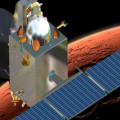The destruction of satellites is equally unprotected. Because the use of military personnel for peaceful purposes is permitted by the TMB, and the United States interpretation of peaceful purposes does not preclude military activity, the Space Force is possibly legal under international law. University of Cincinnati Law Review Blog Legal Scholarship for Students and Practitioners Online Photo by Brian McGowan on Unsplash Rachel Harp, associate member, University of Cincinnati Law Review As several nations continue to explore the new frontier of outer space, legal issues lurk in the evolving field of international space law. Significantly developed during the Cold War by the United Nations (“UN), space law covers mining, space traffic, space debris damage, militarization of space and more.
Article IV of the Outer Space Treaty states that the Moon and “other celestial bodies” should be used only for peaceful purposes. The treaty also prohibits the placement or use of nuclear weapons and weapons of mass destruction in Earth orbit, in a station or in a celestial body. While military personnel can be used for scientific exploration of space, the creation of the U.S. UU.
Space Force Probably Violates International Space Law. After taking a bioethics course and a health law course in the first year of undergraduate school, Rachel Harp decided to attend law school on a whim. Rachel will practice health advocacy after taking the bar exam and wrote many of her Law Review blog articles on topics. Outside of law school, Rachel loves hiking, camping, and reading.
But is there really a requirement under international law that space be used only for peaceful purposes? If so, to what extent does this requirement, or the U.S. interpretation of this requirement, limit military operations in outer space? The answers to these questions can be surprising. There is no widespread international legal requirement that outer space be used only for peaceful purposes, although there are explicit prohibitions on certain weapons and military activities in certain areas of space. Celestial bodies, such as the moon, for example, are subject to exclusively peaceful use requirements under current international law.
However, these restrictions do not apply to interplanetary space, areas between celestial bodies, including Earth orbit, cislunar space and cislunar orbit, and areas farthest from deep space. Ultimately, existing international space law provides significant scope for the United States and its potential adversaries to participate in military space activities. This comes when Congress passes the National Defense Authorization Act (NDAA), the annual bill authorizing Pentagon funding. The text of the legislation can be found here.
Huffman was joined by representatives Mark Pocan (WI-0), Jesús “Chuy García (IL-0), Rashida Tlaib (MI-1) and Maxine Waters (CA-4). This legislation is supported by Contributors for Common Sense, National Taxpayers Union, Peace Action, R Street Institute and Demand Progress. The current evolution of military space power is intertwined with the rise of the “NewSpace industry”. Between 1957 and 1967, the concept of what it meant to use outer space for peaceful purposes had undergone a seismic shift, particularly in the eyes of the U.
Roughly a decade after the treaty came into force, several other treaties were negotiated by the U. Citing the difficulty of distinguishing between military and non-military uses of outer space technologies, as well as the “dual-use problems” of technologies that could be used for military and non-military purposes, Senator Gore explained to the First Committee that. The Space Force (unfortunately) will not fight asteroids, aliens or space wizards (“the three great threats to Earth according to science fiction movies and television), but rather is destined to operate defensively to protect U. As several nations continue to explore the new frontier of outer space, legal issues lurk in the changing field of international space law.
But since its inception under the former Trump administration, the Space Force has threatened lasting peace and has flagrantly wasted billions of taxpayer dollars, said Rep. Negotiated and drafted under the auspices of the United Nations, it was opened for signature in the United States, the United Kingdom and the Soviet Union on 27 January 1967, and entered into force on 10 October 1967. The Outer Space Treaty was driven by the development of intercontinental ballistic missiles (ICBMs). ) in the 1950s, which could achieve objectives through outer space. Relying largely on the Antarctic Treaty of 1961, the Outer Space Treaty also focuses on regulating certain activities and preventing unrestricted competition that could lead to conflict.
As the United States' international competitors, mainly Russia and China, increase their own military space activities, concerns about the peaceful use of space are likely to be further accentuated. SpaceX, while primarily a launch provider, is entering satellite communications and is in the process of launching approximately 12,000 satellites of its own. . .



